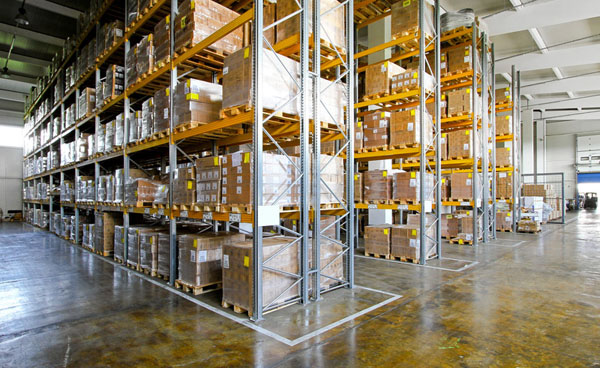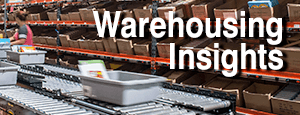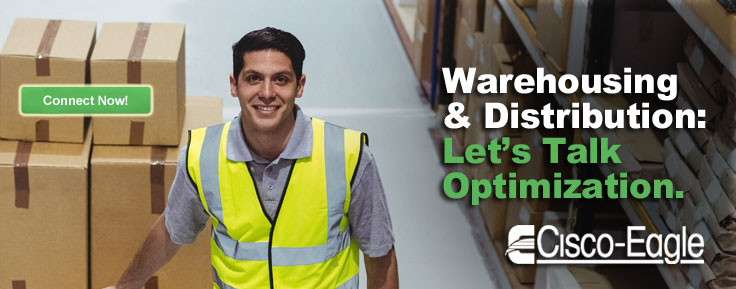How to Prepare Your Warehouse for a Client Tour
Simple steps to ensure your warehouse makes the cut

When a prospective client wants to visit your 3PL facility, it’s critical; you could be on the verge of new business.
You want to show them why they should select you as their 3PL of choice; that you’re the best choice; that you can be trusted to help them serve their clients. It’s no easy task running a successful warehouse or third party logistics company – it’s a multi-faceted organization with its own specific attributes and specialties.
Be Prepared for your warehouse tour
1) Know your audience – Be aware of what type of the company that is visiting your facility and how you can offer what they’re needing. If your location has access to main highways and airports, then highlight that in your tour. Perhaps you offer the best rate? Are they visiting a couple different warehouse providers while they are in town?
Try and do as much research as you can in preparation for a client tour, and this way there won’t be too many surprises. It will help if you can have answers prepared for all of the anticipated questions they may ask, as well as a clearly defined schedule for their tour. Their time is valuable and if you can keep the meeting on track and as succinct as possible, it allows both parties to go about their day and be a lot more productive.
2) Ensure that your warehouse is clean, neat, and organized – This should be done on an ongoing basis. Aisles are to be swept and kept clear of debris and mess, all inventory is properly stacked and put away, all forklifts are returned to their proper stations when not in use, and out of harm’s way, as well as any packaging, wrapping or garbage is collected and properly disposed of. A company should always aim to be prepared – the mandate should be business as usual, and there should be little, if any, preparation needed for any client or unexpected tours. If things are kept up to par every day, then there is nothing to fear.
Related: A Guide to Cleaner Warehouses, and 7 Ways Effective Housekeeping Boosts Productivity
3) Safety precautions – It is imperative that all staff, whether those individuals who work on the warehouse floor, or those that are just walking through, wear the proper safety gear: protective eye wear or goggles, a safety vest for easy visibility, and closed-toed shoes. Forklift certificates should be kept up to date, and any training and re-certification should be ongoing and monitored. There is a lot of valuable inventory that is kept in a warehouse, and strict guidelines should be adhered to in order to ensure that product is kept safe and damage free.
4) Presentable/Professionalism – Ensure that everyone is dressed appropriately, appears tidy, presentable, and professional. If a uniform is required, it is important to ensure that all members of your team are dressed suitably. Employees that are working in an office environment/ not on the warehouse floor should always be dressed in a professional manner and follow company dress code policies. This way the entire organization comes across as professional and well prepared.
5) Showcase certifications and compliance – Clients want to know that their product and inventory is being stored safely and responsibly, especially when it concerns food grade items. Certifications are one of the best ways to ensure that your warehouse will handle inventory following the best practices and procedures that are recommended.
- “Hazard Analysis Critical Control Point (HACCP) is an approach to food safety that is systematic and preventative…HACCP goes beyond inspecting finished food products. It helps to find, correct, and prevent hazards throughout the production process. These include physical, chemical and biological hazards.” – www.inspection.gc.ca
- ISO (International Organization for Standardization) – ISO 9000 – Quality Management – “The ISO 9000 family addresses various aspects of quality management and contains some of ISO’s best known standards. The standards provide guidance and tools for companies and organizations who want to ensure that their products and services consistently meet customer’s requirements, and that quality is consistently improved.” – www.iso.org
Once the tour has been completed, it is a good idea to solicit feedback from your clients – were they satisfied? Is there anything that you missed or didn’t touch upon that they wish you had? Are you highlighting similar storage methods to what their specific product would require? Are you showing them an overview of the whole process – long term storage, the dock doors, dispatch office, staging area, etc.? Reviewing these upon a tour completion can help your follow up and provide great information for future tours.
Tags: 3PL, lean warehousing, warehouse, Third Party Logistics, warehouse flow, ecommerce, Warehouse Management, warehousing, Material Handling
Evan Fleishacker




